A travel guide to Italy
Travel Series Part 2: Walking Rome like a local, the best Parmesan cheese, the search for authentic gelato, and more tips from Italy.
This is the second in a three part series on travel. For tips on packing a carry-on, read Part 1, and for tips on traveling with anxiety, read Part 3.
“The space is both intimate and explosive: your humanity is not diminished in the least, and yet simultaneously the Pantheon forces you to pay attention to the fact that the world includes things far greater than yourself.”
—Anthony Doerr, Four Seasons in Rome
The buildings are so… heavy.
This was one of my first thoughts after arriving in Rome and barely sleeping a wink on our overnight flight from New York. We settled into our hotel and promptly wandered the streets, arriving in the spacious Piazza del Popolo at the base of the Borghese Gardens.
I turned around and there it was: a basilica so tall, with columns so large, that it actually caused me to weep. I was tired, yes, but there’s also something about the stone—it’s sturdiness, weight, and permanence.
It was not the Pantheon. That would come tomorrow. But Anthony’s sentiment holds true for most old things that are still standing, always reminding us how much bigger and more beautiful world is than our hearts can even hold. It puts us, literally, within the folds of a history that has come before, and suddenly our own small life feels not diminished, as he says, but expansive as part of the larger, unfolding story of time.
That’s a long way of saying I was moved, more than once, to stand in front of churches and ruins and even apartment buildings that have housed generations and generations who have lived and loved and struggled and found joy. It’s a lot to take in.
[NOTE: This email is a long one (and filled with pictures!) so to read the entire thing you’ll need to click into it on your desktop.]

Whenever I start planning a trip—near or far—I spend a lot of time combing blog posts and travel lists to find the best of this or that. Some of the most memorable experiences we had in Italy were recommendations from others, so I want to pay it forward for anyone who might be traveling there in the future.
For this trip we had four major stops: Rome, Florence, the countryside of Emilia-Romagna, and Lake Como.
Before we go city-by-city, a few notes on finding excellent gelato (and avoiding gelato turistico), because you’ll be eating this sweet treat every day.
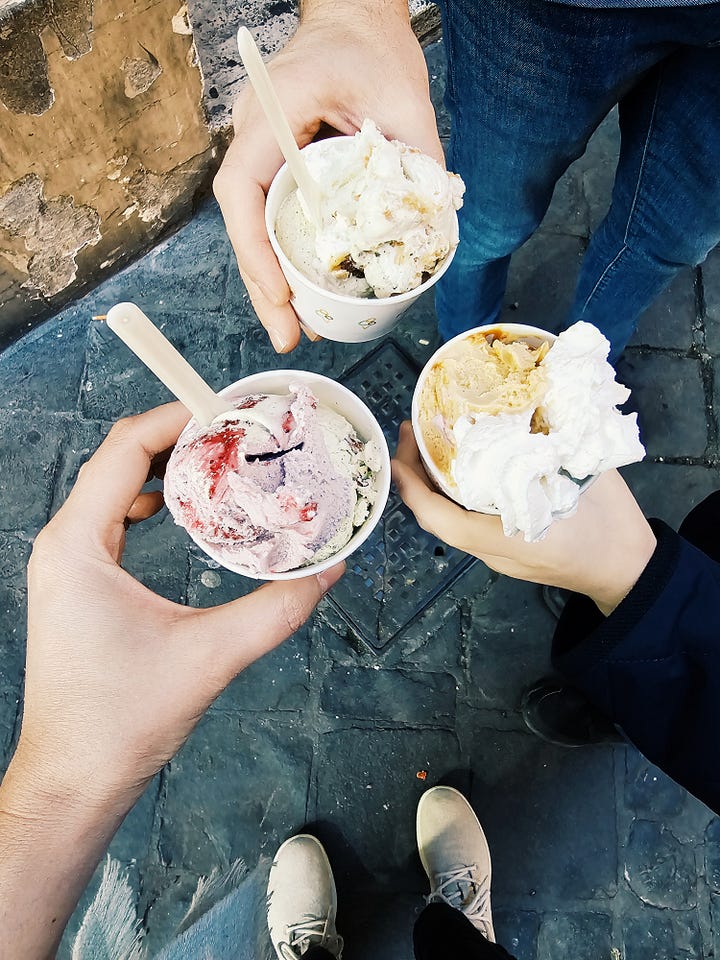
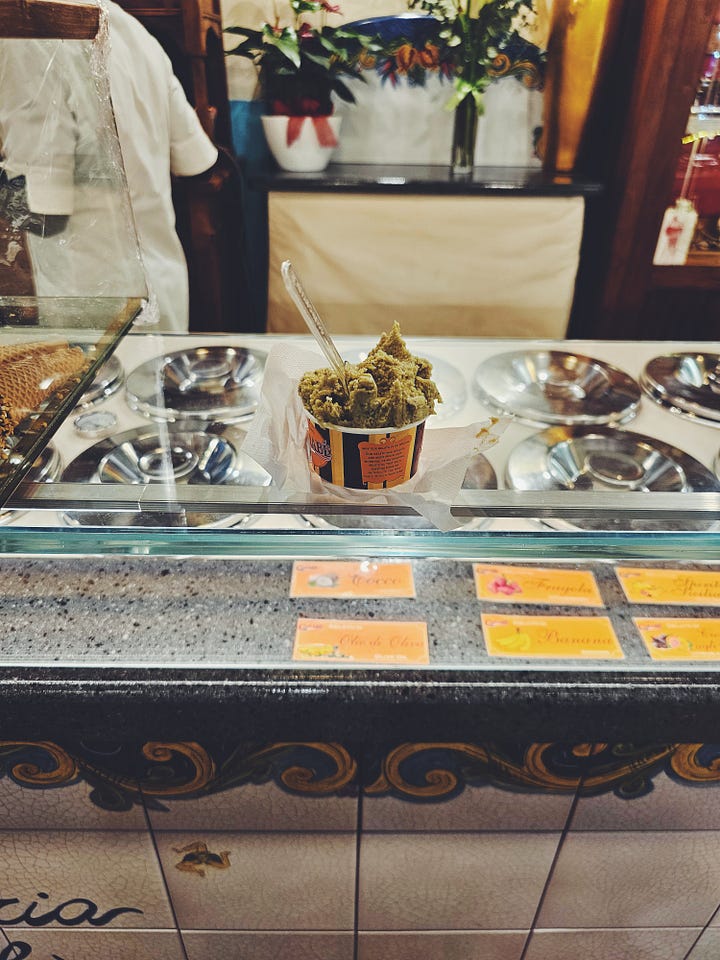
This post is a great primer on what to look for. Dull and neutral shades are best. If the gelato looks neon or unnatural in color, keep going. Also, if it’s piled high behind the glass case and drizzled with sauces, keep going. The best stuff should be in metal containers—bonus points for having a lid, which means it’s being kept at the right temperature.
You might see some shops with the word autentico on the sign. At first glance this appears to be a sign of authentic gelato made in the traditional style, but my understanding of this word is that it’s similar to natural in the United States, which is to say, unregulated and mostly void of meaning.
ROME
I hadn’t been to Rome in twenty years, and it reminded me a lot of Los Angeles in the way that it’s a sprawling neighborhood-centric city. We ended up staying at a charming boutique hotel near the Piazza del Poppolo, which was convenient for sightseeing but required more sleuthing to find the food gems that weren’t catering to tourists. (For a fast bite, visit Gino’s window for a mortadella sandwich and add the pistachio cream.)
From here we walked to the Borghese Gardens—don’t miss the incredible city views—and ended up renting motorized bikes for an hour, just for fun. It was also an easy walk to the Trevi Fountain, Pantheon, and Piazza di Spagna. You can also hoof it to the Colosseum, Campo de’ Fiori, and across the river, which we did.
Our favorite gelato was at Fatamorgana, which tied for my favorite pistachio of the trip (my other favorite was in Florence, below).
Rome is famous for its square pizzas and the slabs at Forno da Milvio did not disappoint. This shop was already on my list before we arrived, and confirmed as one of the best by our food guide, Sophie. **Tip: Take it to go and eat on the steps of the Piazza Fontana dei Catecumeni, which is very close. This is a great stop before or after a visit to the Colosseum.
Speaking of Sophie Minchilli, we strolled with her through the Jewish Ghetto and Trasteverie neighborhoods for a food tour that was such a highlight. She took us to local shops to try cheese, pasta, and salami. Pizza at Supplì might have been my favorite bite of the night (photo below—the red slab). Our tour finished at Olateg, serving organic gelato made with seasonal flavors like wild strawberries.
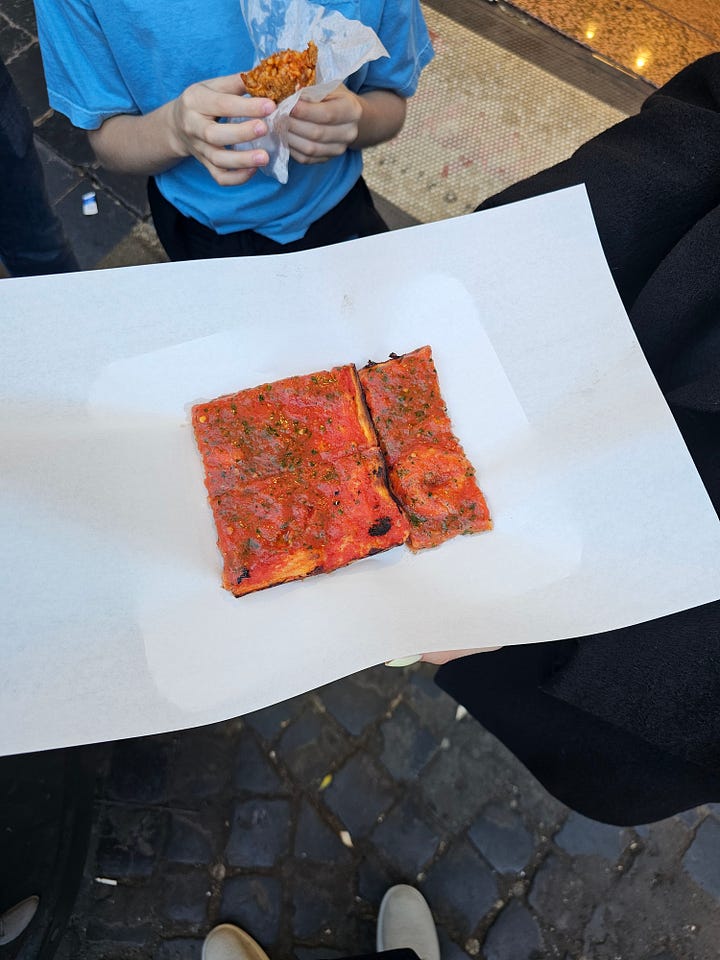
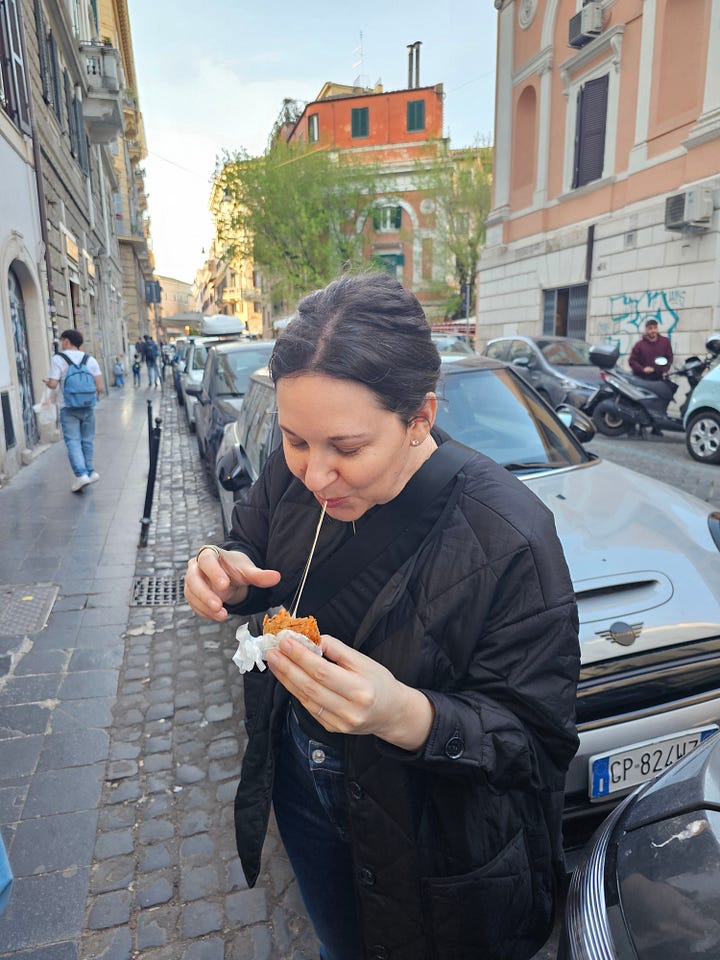
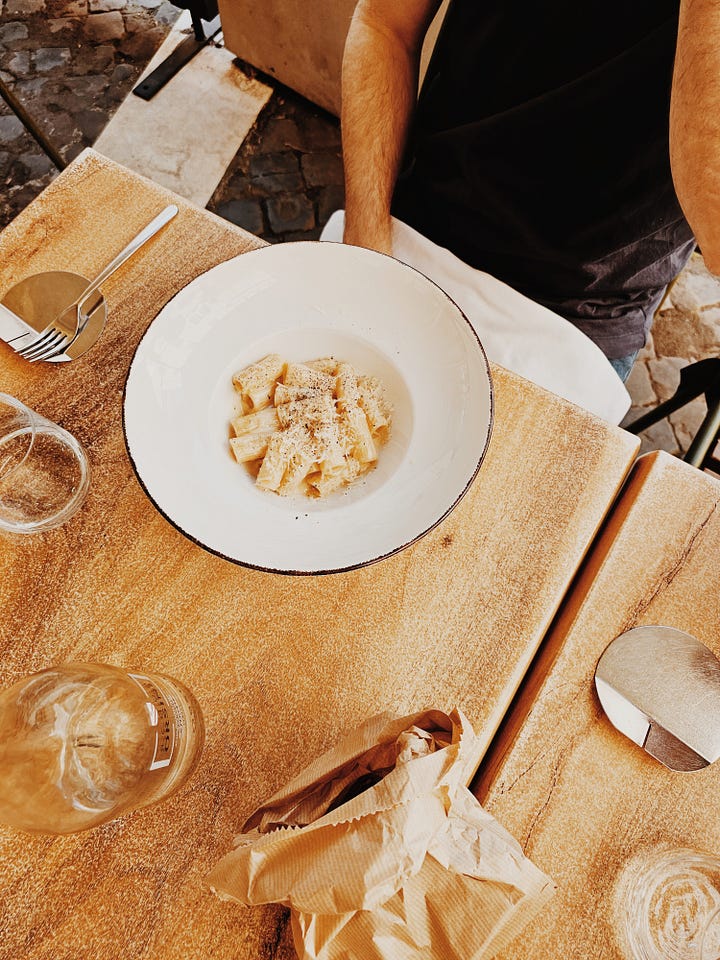
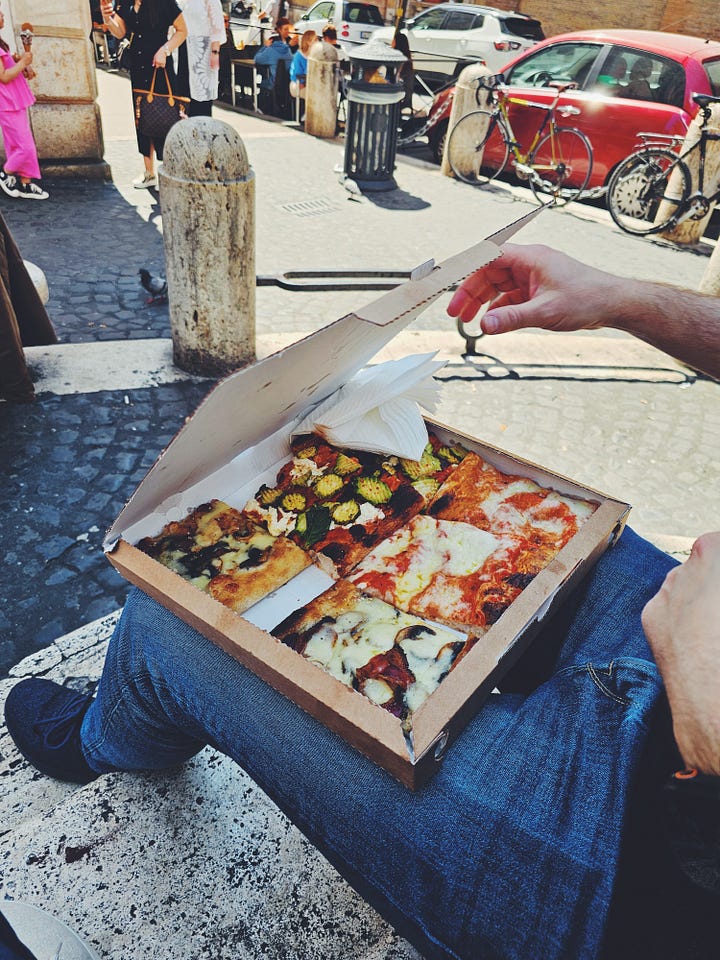
FLORENCE
We took the high-speed train to Florence (about 1.5 hrs) and walked from the train station to our hotel in the Piazza de Santa Maria Novella. Before going to our room, we picked up egg and truffle sandwiches from Procacci, then walked across the Arno for coffee at Ditta Artiginale.
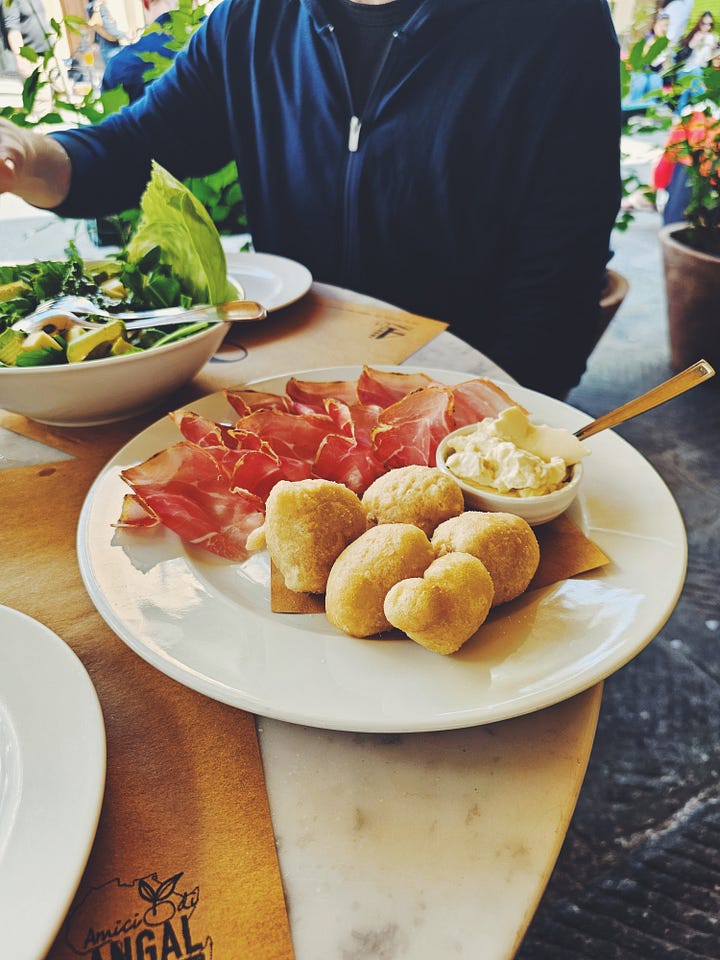
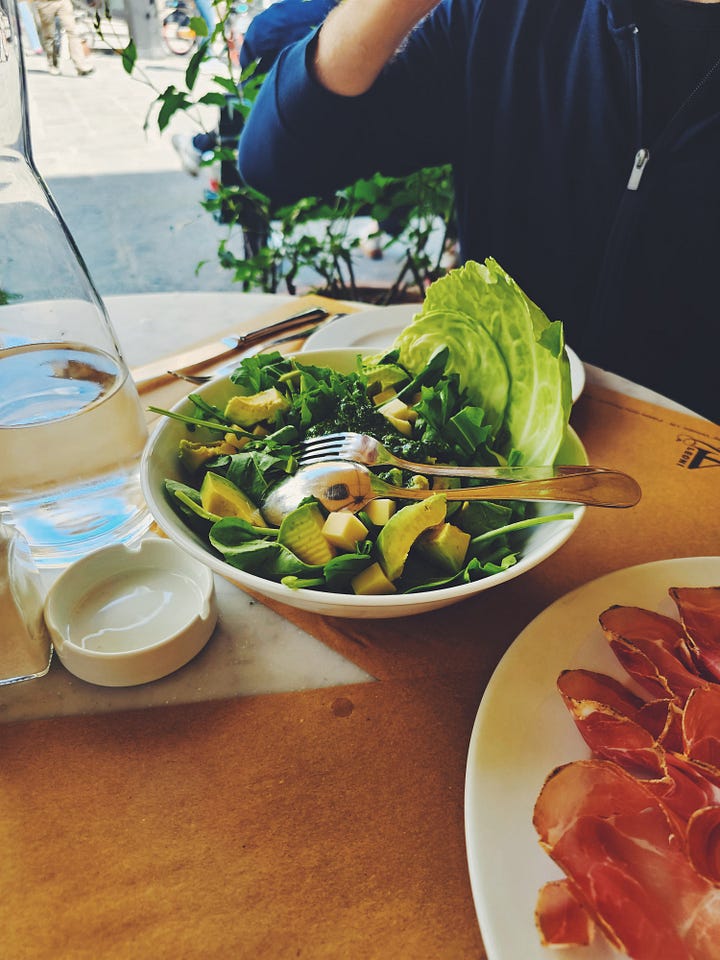
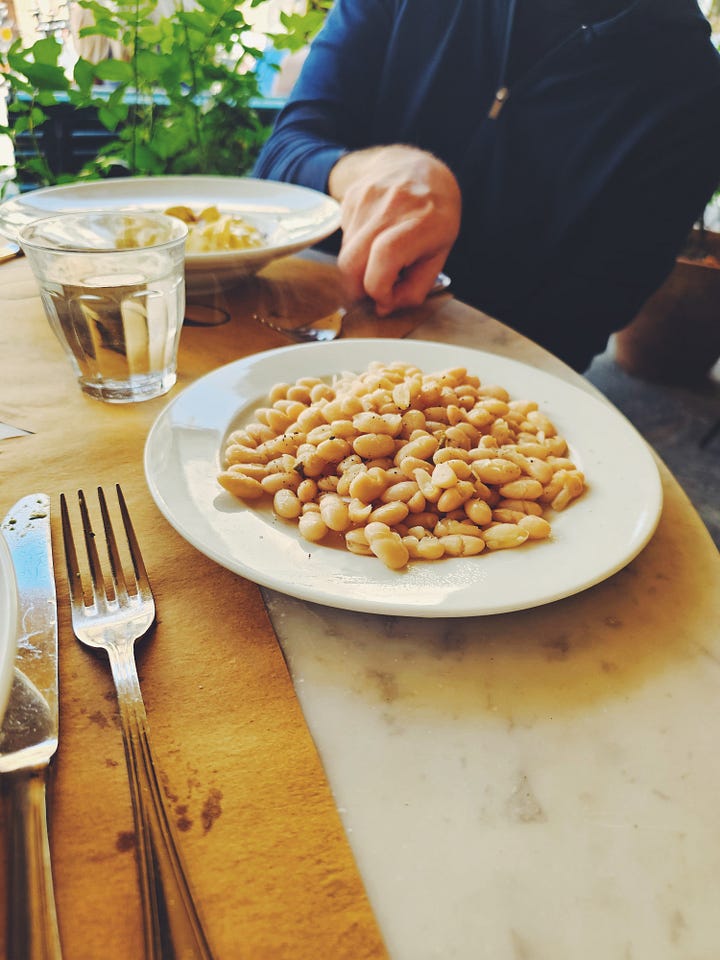
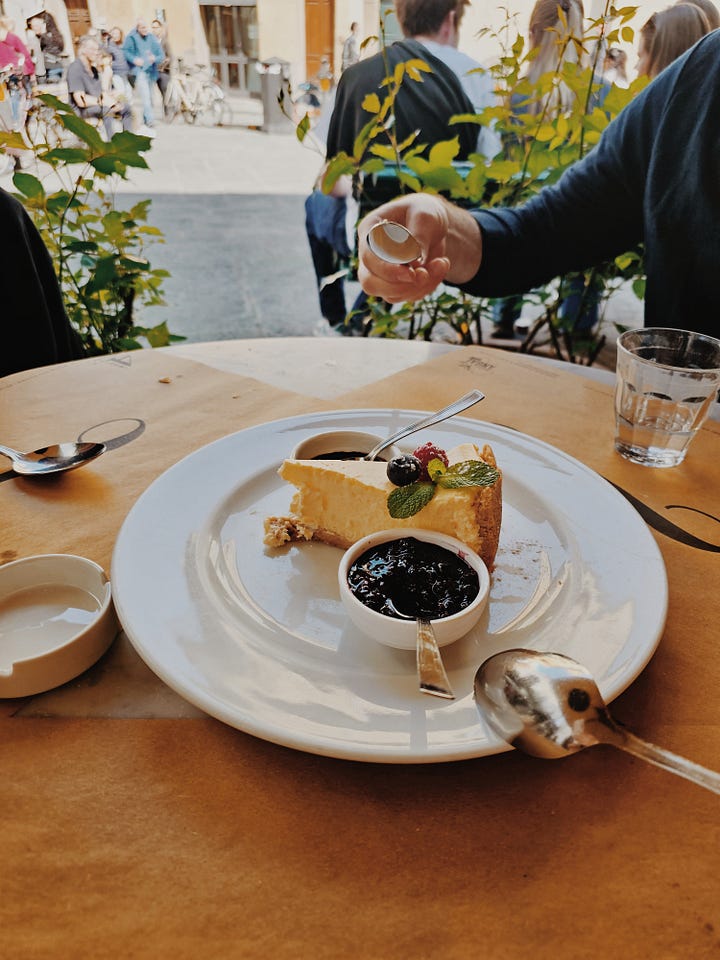
Florence restaurant highlights: First, Trattoria 4 Leoni. The menu was in Italian (a sign that they cater to locals and not tourists) and the server pointed us to a regional specialty: coccoli. It’s pieces of fried dough stuffed with creamy cheese, then wrapped in prosciutto. We sat on the covered patio and enjoyed the breeze while savoring cheesecake made with local ricotta. Heaven.
We ordered coccoli again the next night when we had Florentine steak at Osteria Pepó, which was recommended in
’s Italy roundup a few years back. We also enjoyed homemade pasta covered in truffles.After dinner we stopped by Gelateria Carabe (so good!) This is also where my son charmed the staff by ordering his cone in Italian (un cono con due gusti, per favore) so she gave him an extra large double scoop. We also ate at Simbiosa Organic Pizza twice, which had the most flavorful crust. It’s near the duomo and Galleria dell'Accademia if you’re looking for an easy place to eat while you sightsee.
I also popped into Todo Modo for a book. These essays, edited by Jhumpa Lahiri, are in both English and Italian.
My husband is a coffee guy, and one of his joys is making a morning latte in his La Marzocco espresso machine. Their factory is about 20 minutes outside the city center, so we spent a whole afternoon at the Accademia del Caffè Espresso eating lunch, nibbling on almond cantucci, taking a truly informative tour about the brand’s history, learning about the migration of Italians to Brazil to become coffee farmers, and playing with all the iterations of the machines over the years. I’m more of a tea drinker (unless the coffee is decaf) but I absolutely loved this tour, and I love drinking coffee in Italy. They also serve their drinks in handmade ceramics that are crafted on-site. Of course I brought one home as a souvenir.
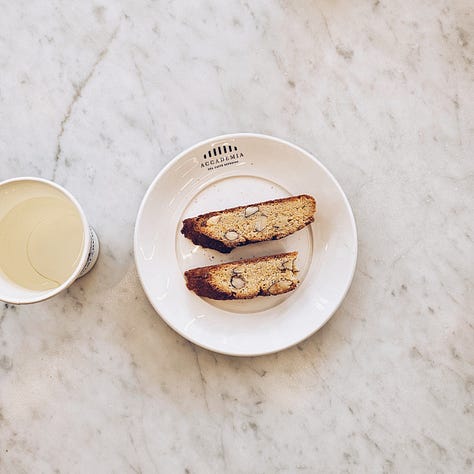
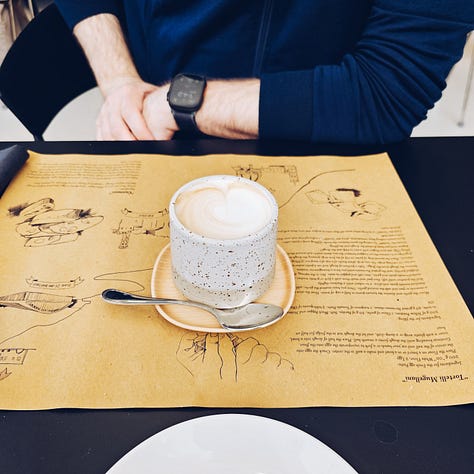
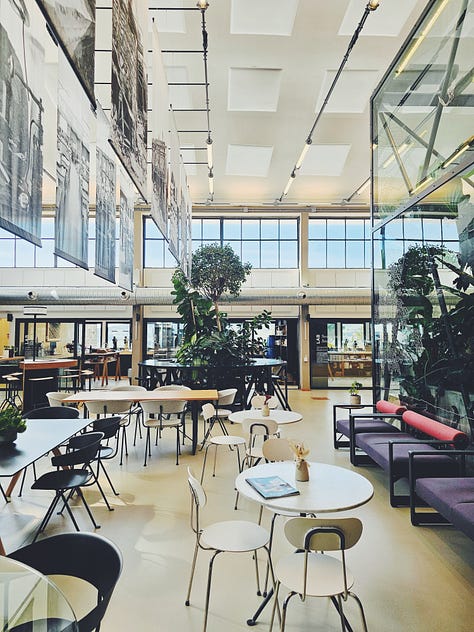
Finally, something I was THE MOST excited for was visiting
who writes . We’ve been internet friends for well over a decade (I made her biscotti on Eat This Poem back in 2018.) Spending time in her studio, petting her dogs, picking herbs from the garden, and discussing Italian cooking for hours was as dreamy as it sounds and a true full circle moment for the food writer in me. Don’t hesitate to join one of her cooking classes if you’re planning to be in the area!EMILIA-ROMAGNA
This was the part of the trip where we disengaged from city life and enjoyed a few restorative days in the country. We splurged and stayed at Relais Roncolo 1888, which was magical and I didn’t want to leave. The service was impeccable (don’t miss the balsamic tasting) and we felt like the only guests there.
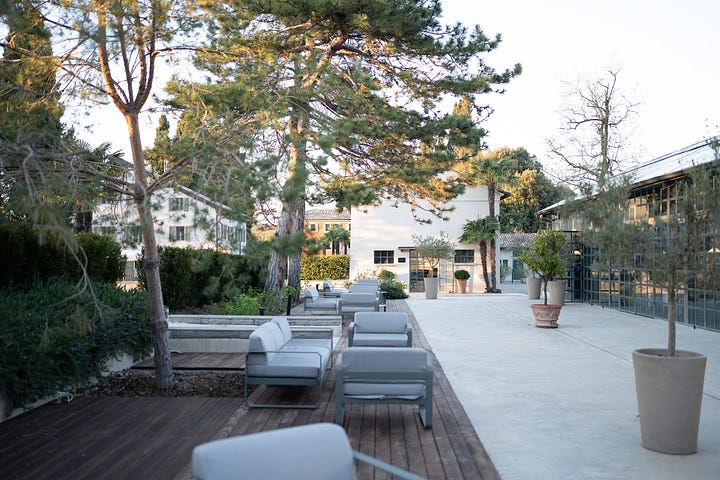
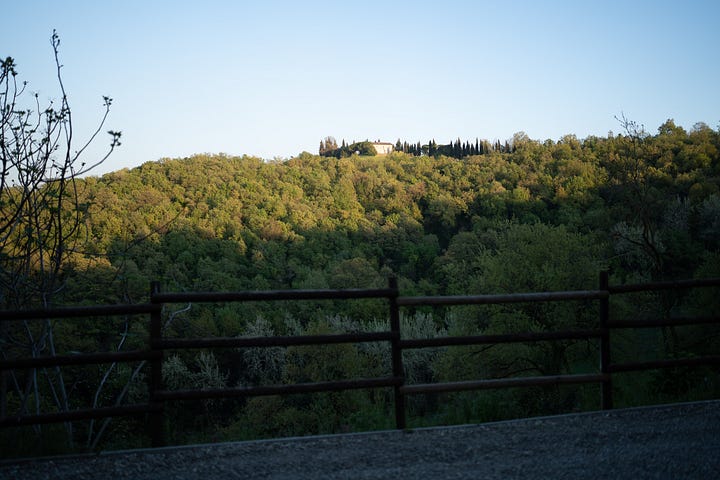
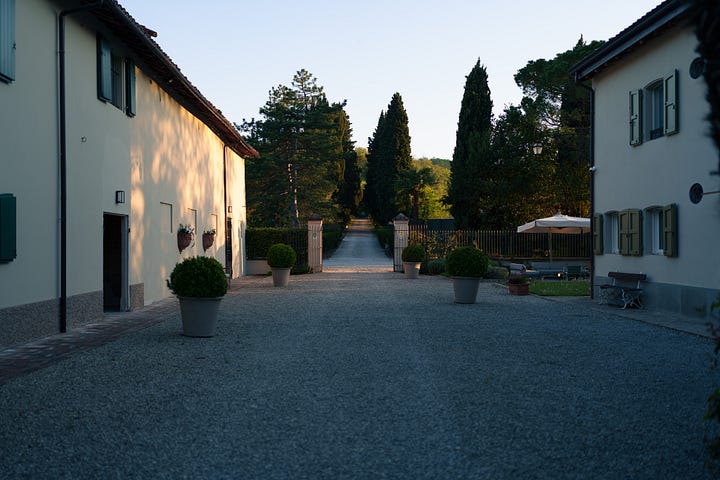
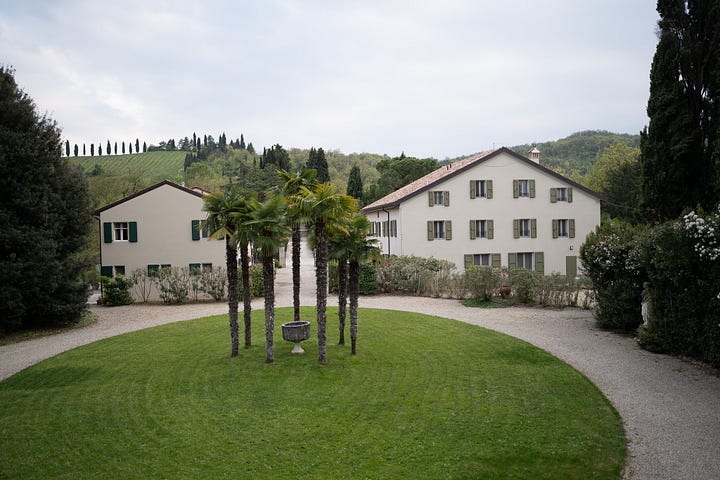
Before arriving, we took the train from Florence to Bologna, then had a driver drop us off in Maranello for a visit to the Ferrari museum and lunch at Ristorante Cavallino. The restaurant is special for a few reasons. It’s where Enzo Ferrari would walk every day for lunch when he was working at the factory. The menu has also been reimagined by Chef Massimo Bottura, who runs a restaurant in Modena that we couldn’t visit on this trip because children under 12 aren’t allowed. The Ferrari-shaped chocolates at the end of our meal were a fun touch.


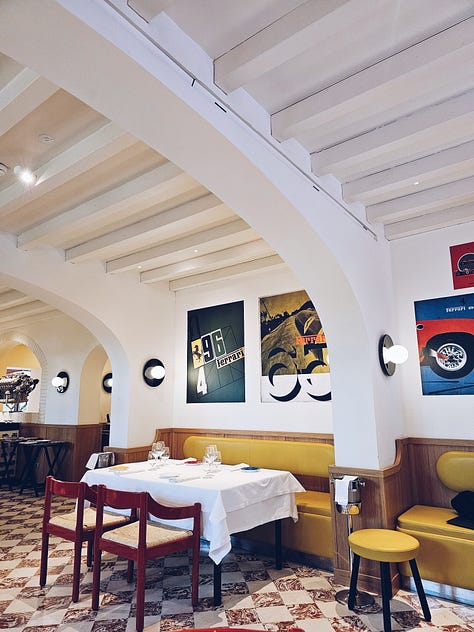
If you’re in the area and you adore cheese and prosciutto, you absolutely must join Angelo Fanzini for a local tour. He was such a knowledgable guide who has a true passion for the area. He took us to family-run operations that have been crafting Parmesan and Prosciutto di Parma for generations, and we finished the tour at a winery restaurant overlooking the valley. I can’t say enough good things about him!
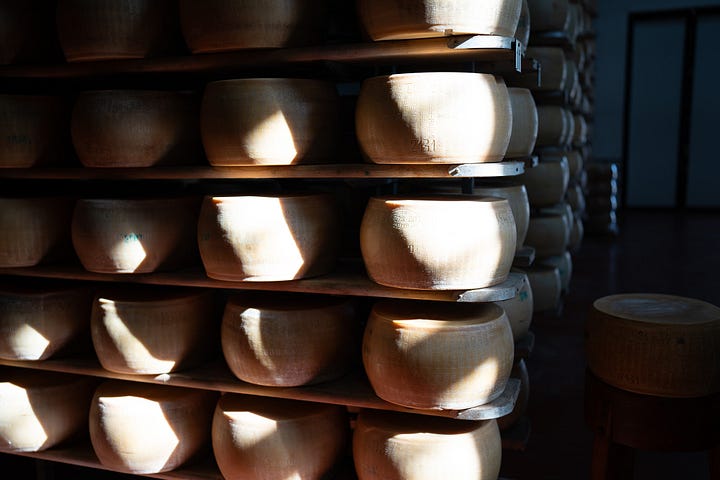
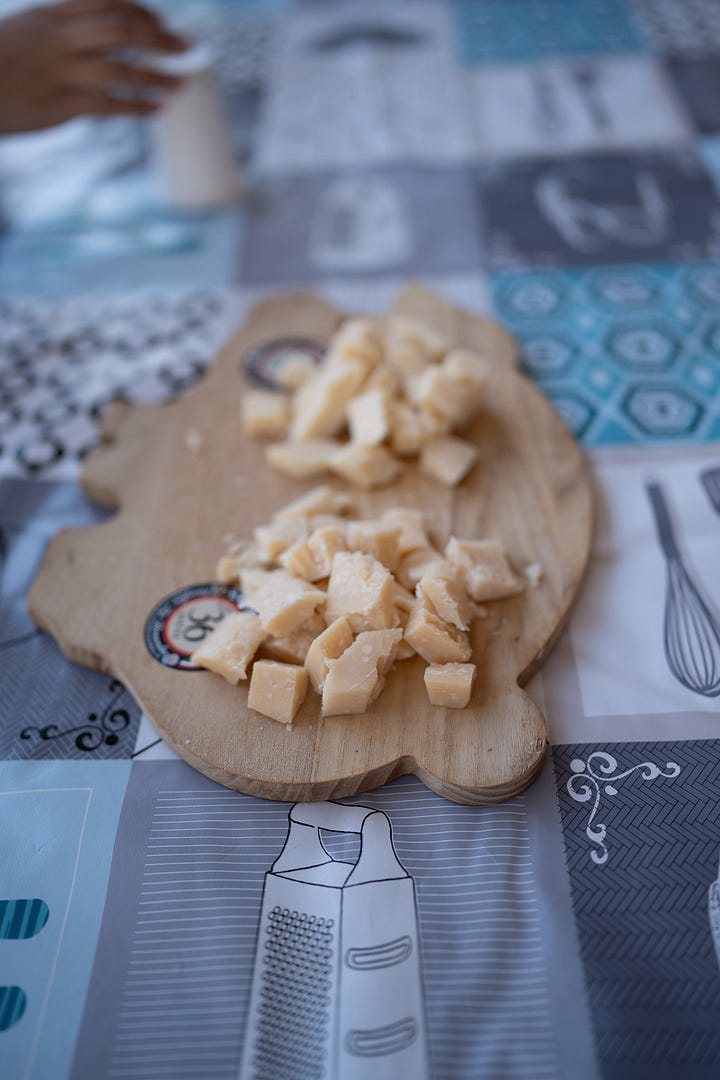
LAKE COMO
After our third and final train ride we arrived in Milan and grabbed lunch at Mercato Centrale. This food hall is attached to the station and was great for a quick meal in transit. The lake is about an hour away, and after checking in to our hotel, we had some time to unpack and relax on the patio before taking a four-hour boat tour.
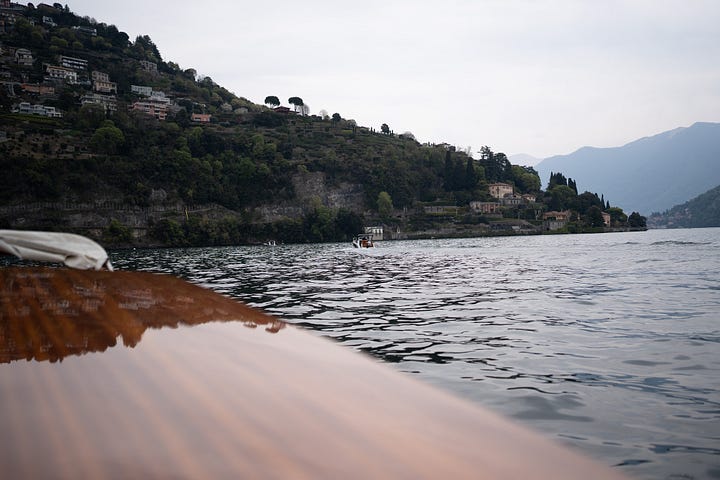
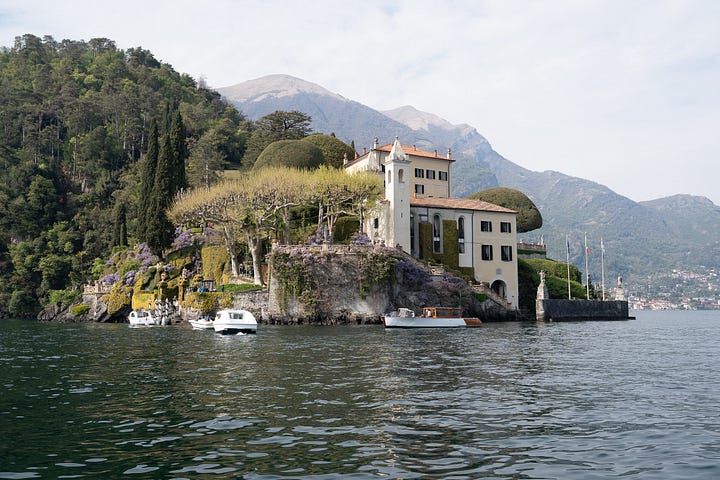
Bellagio is very touristy, but it’s also home to Villa Melzi, where you can walk through a lovely botanical garden and museum, and admire the neoclassical architecture. On the walk over we used a public bathroom for the very first time and found it quite smart and efficient. You paid a fee to go inside (1 euro), a door opened and closed for you, and when you came out the entire unit was automatically sprayed down with water and cleaned for the next guest.
On the way back we floated by the village of Nesso, which prompted Leonardo da Vinci to write in his Codex Atlanticus: “Nesso, the land where a river falls with strong impetus, in a large break in the mountain.” We didn’t have time to get out and walk around, but it’s worth putting on your list.
One restaurant we enjoyed here was Crotto dei Platani. It’s a little bit fancy (but still approachable) and has the most beautiful views. We also picked up wood-fired pizza from Trattoria Pizzeria L'Ancora around the corner from our hotel, which was a great find!
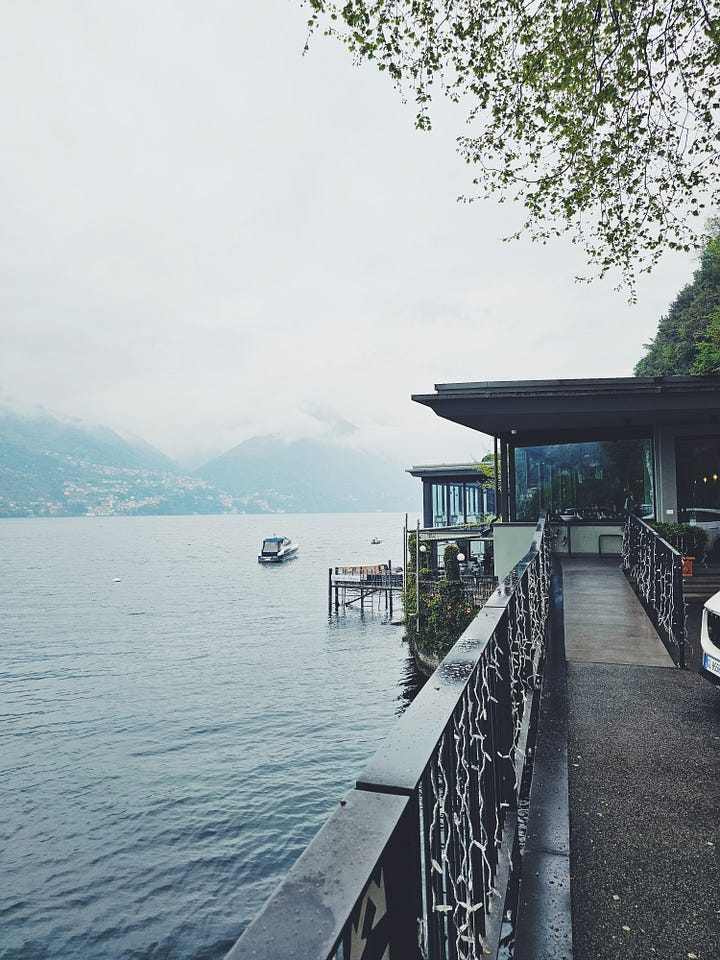

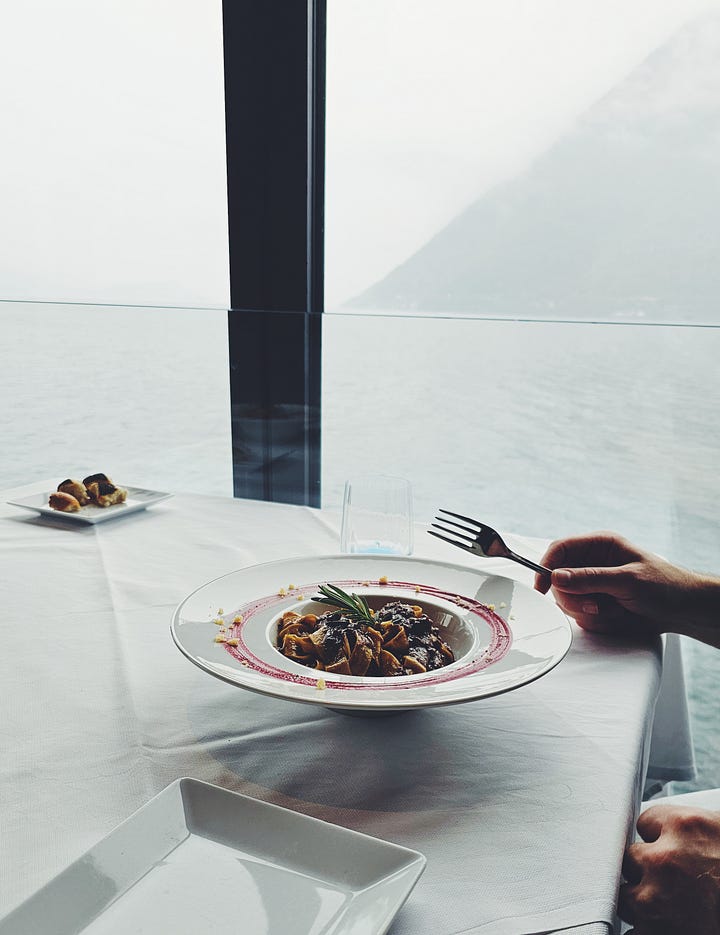
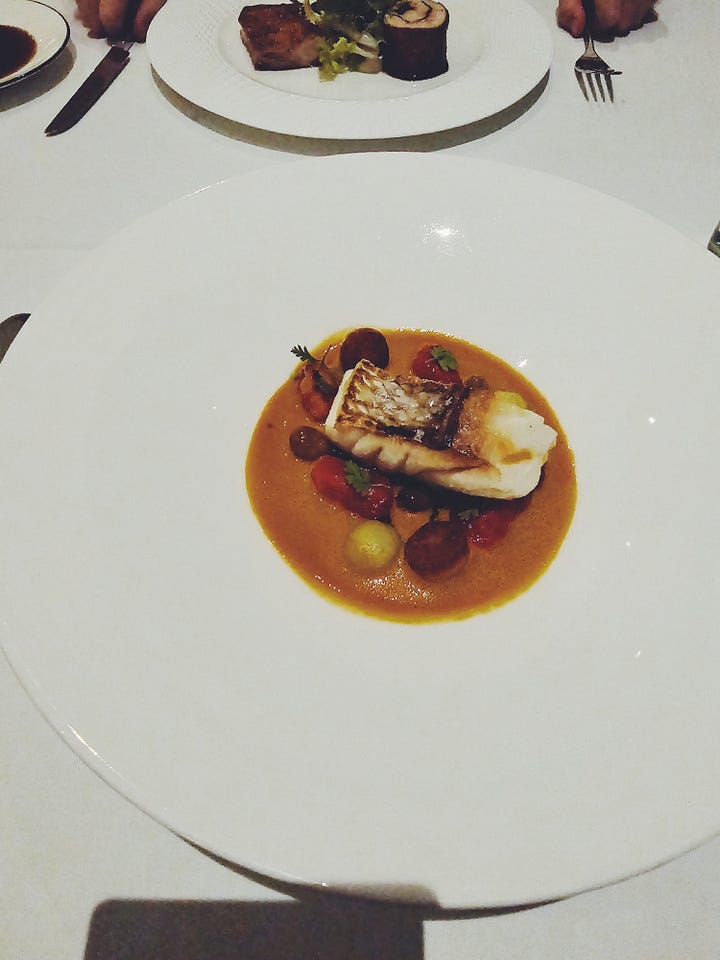
Lake Como’s city center is charming and easy to cover on foot. For a few euros we took a boat ride from our hotel and walked around, stopping for gelato (of course), the bascilica, and finally, coffee at Caffe Caffe in Piazza Giuseppe Mazzini. Be sure you’re in the right location—they have another shop but it’s smaller with less outdoor seating. I couldn’t think of a more perfect afternoon for the last day of our trip.
Although this guide is fairly extensive, there’s so much we didn’t do. That’s the bittersweet reality of travel, isn’t it? I hope that if you’re visiting to Italy in the future, you’ll find a few gems from this list to make your trip extra special.
Finally, do you have any questions? Let me know in the comments if you want to chat about train travel, public bathrooms, language barriers, or anything else on your mind!
Until next time,
Nicole

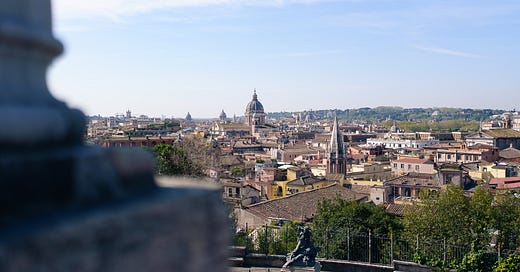






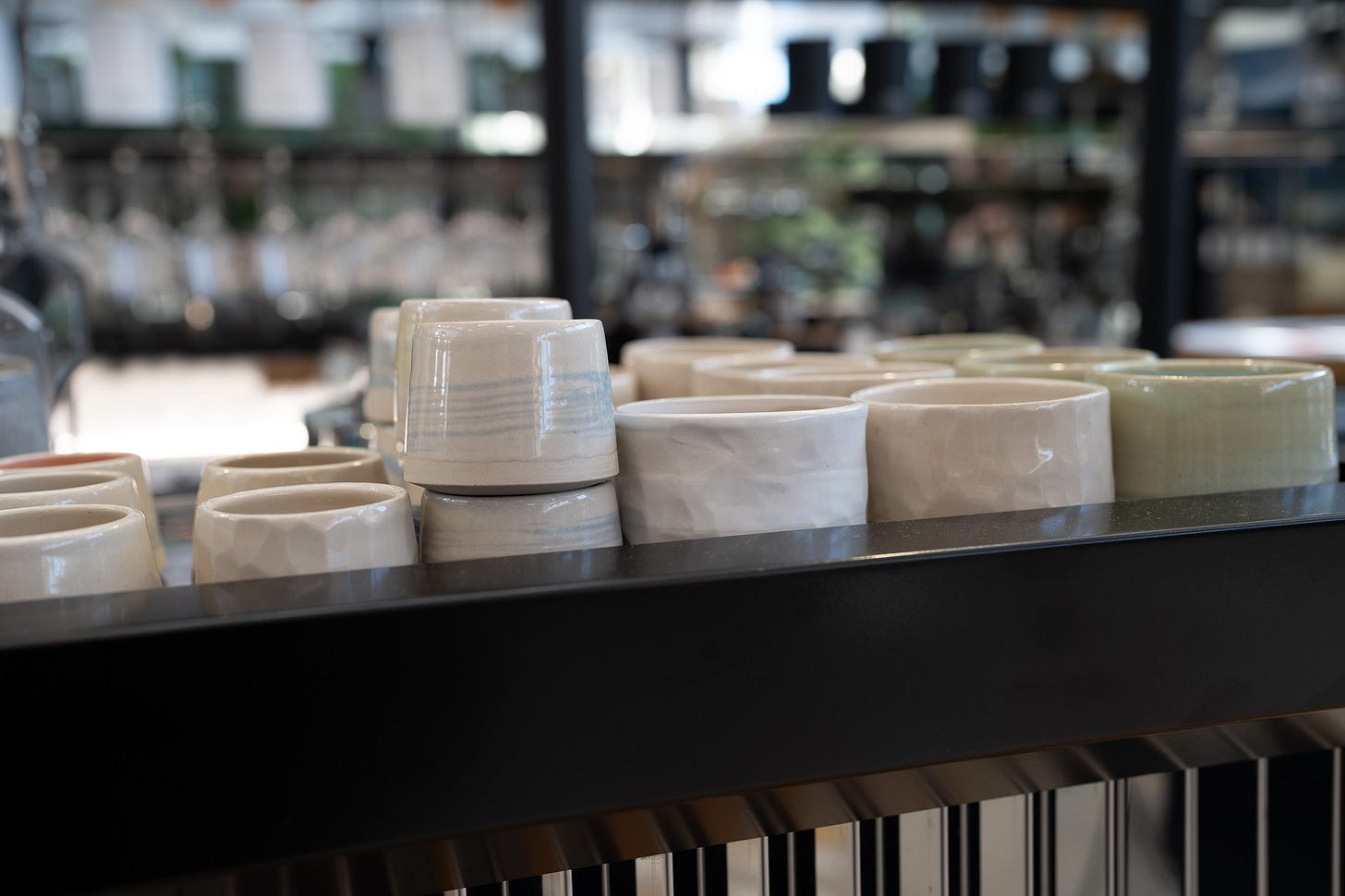
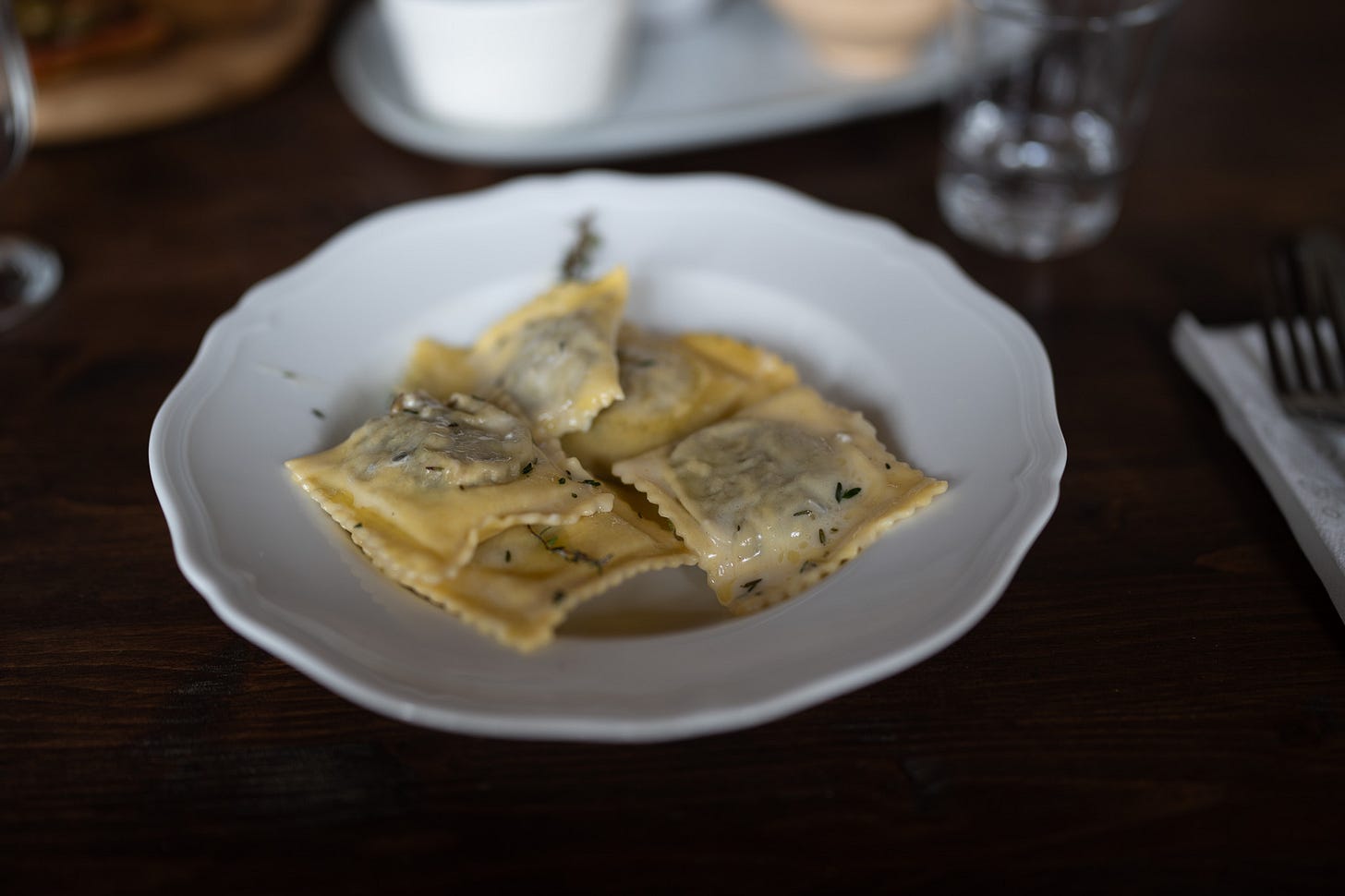





It was such a joy to meet you and your family in real life!
This is such a great guide. Thank you!